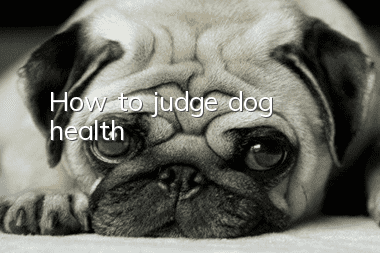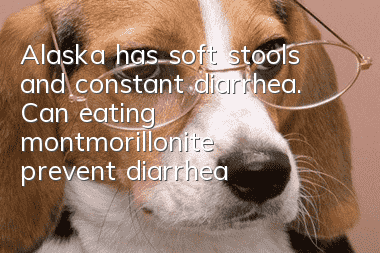How to judge dog health

1. Look at your spirit and appetite
1. Look at the dog’s mental state. Everyone knows that dogs are a lively and active species. Healthy dogs are lively and agile, wag their tails frequently when seeing their owners, and are sensitive to external stimuli. If the dog’s head is lowered, its tail is drooped, its expression is cold, it stands still or huddles in a corner, and it is slow to react, it may be that the dog is sick.
2. Secondly, it depends on the dog’s appetite. Healthy dogs have a strong appetite. They will be very excited when their owners feed them. They often circle around their owners and eat very quickly. Their food intake is relatively stable and they are not picky. . Sick dogs have loss of appetite, reduced food intake, like to drink cold or clear water, pick food or refuse to eat.
2. Look at poop
Poop is an indicator of health. You can understand your physical condition from the shape of your poop. Healthy poop is compact and can be picked up with a paper towel. If the food does not change and the volume and frequency remain constant, the volume and frequency of defecation will remain the same, and the taste will be basically the same.
Tar stool: refers to black stool. If the stomach, duodenum, small intestine, etc. far away from the anus bleeds, the color of the blood will change because the bowel movement will not be immediate, and it will turn into black stool. Seek medical treatment promptly.
Bloody stool: It is stool mixed with blood. Sometimes there may only be blood on the surface of the stool. When you find bloody stools, you must be vigilant and seek medical attention promptly if severe.
Mud-like stool: It is sticky, mud-like stool. If you continue to pass muddy stools, it's time to see your doctor.
Mucus stool: It is the sticky white mucus on the surface of the feces. This is the mucus in the intestine mixed with the feces and excreted together. It indicates that there may be an abnormality in the posterior part of the large intestine such as the colon and rectum, and timely medical treatment is required.
Bloody stool: It is a state of mucus mixed with blood, which means that there is an abnormality in the back segment of the large intestine and requires immediate medical attention.
3. Look at the urine
The formation of urine is a process of normal metabolism and elimination of cellular waste. And the color of urine can change depending on what your dog has eaten or drank recently. Under normal circumstances, dog urine is transparent and light yellow, and other colors are problematic.
Tan or black urine: This indicates a serious problem with your dog’s health. The dark color is due to the destruction of blood cells to release hemoglobin, muscle damage such as external trauma or poisoning, such as garlic, zinc, or ingestion of acetaminophen (Tylenol).
Red urine: There is blood in the urine, usually called "hematuria". This may be caused by the breakdown of a muscle protein called "myosin" in the blood, or the breakdown of a protein called "heme". It may also be caused by infection, tumors, unknown causes of the kidneys or urinary tract. Usually acute trauma, poisoning, blood parasites, kidney disease, bladder disease, stones, etc. can cause hematuria.
Orange or orange-red: This color may be due to bilirubin in the dog’s urine. The concentration of bilirubin in urine will increase when red blood cells are destroyed and liver disease occurs. If the eyes, skin or gums also turn yellow or orange at the same time, take your pet to see a doctor immediately.
Note: Small color differences in the color of dog urine within the same day are not a big deal, but if the color changes greatly and lasts for more than two days, parents should pay attention.
- Diagnosis and treatment of dog fever
- What should I do if my pet dog is allergic to vaccines?
- How to brush your dog’s teeth? What should I do if my dog refuses to brush his teeth?
- What should I do if my dog keeps scratching and biting?
- What are the most common oral and dental diseases in dogs? Dog Oral Care!
- What are the training tips for Australian Cattle Dogs?
- Research shows that dogs raised in cities are more likely to develop social anxiety than dogs raised in rural areas
- How to train a Great Pyrenees
- Why do dogs sigh?
- What are the symptoms of dystocia in dogs, and what should I do if my dog has dystocia?



